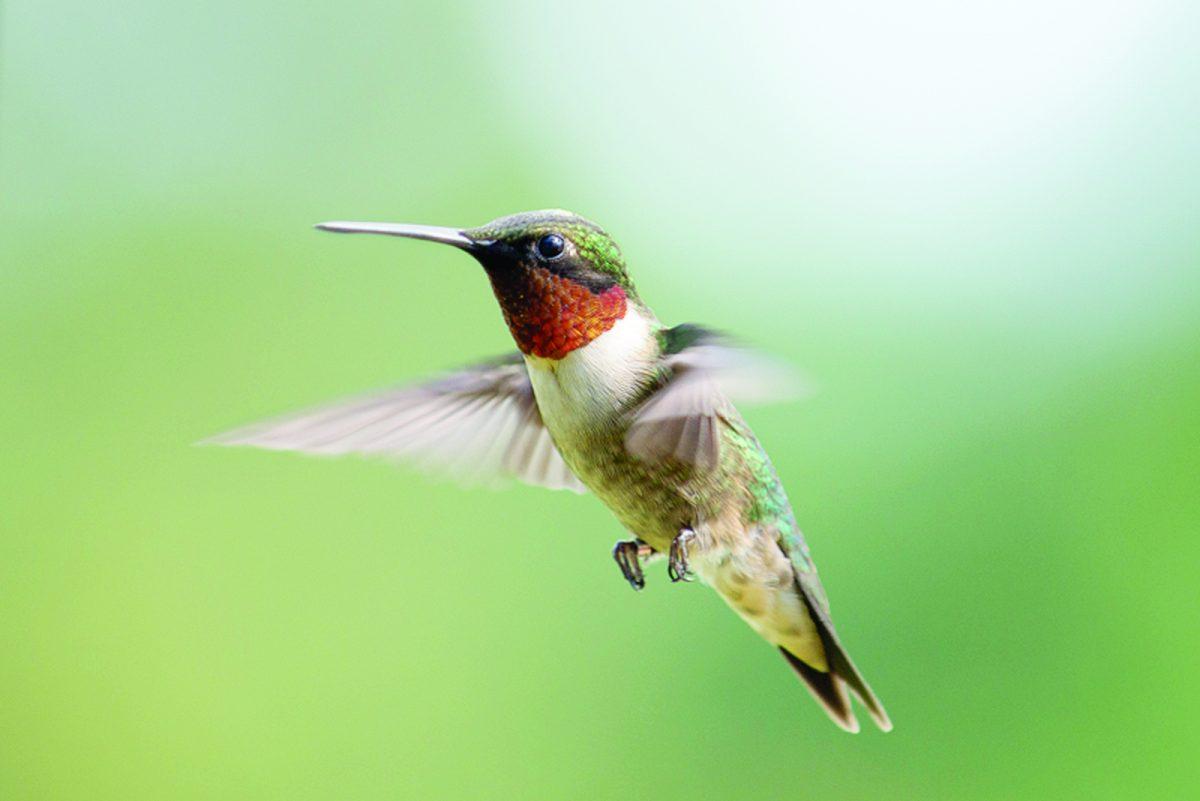Three French hens, two turtle doves and a hummingbird in a pear tree?
On Jan. 9, 2004 Bob Horton found a very young female Rufous hummingbird using its beak to push aside snow that had fallen on his feeder in Raleigh.
It was caught and banded on Jan. 21 by Susan Campbell, whose research is affiliated with the North Carolina Museum of Natural Sciences.
Campbell confirmed that the bird was in its first migration from the Northwest. Horton and his wife proceeded to find at least one hummingbird during the years of 2005, 2008, and 2011 being pleasantly surprised each year they saw them.
Campbell says the phenomenon of wintering hummingbirds in North Carolina is one that we cannot really explain right now. According to Campbell, some of the birds stay all winter but others only stay for a period of time. The birds can be in North Carolina from early November to around the end of March.
“We’ve known it’s been going on for quite some time, it’s not as unusual as we first thought, but it’s not a common thing. Most people recognize it as a special thing and spend a lot of time watching for it, especially inland,” Campbell said.
Campbell keeps track of reports of wintering hummingbirds using a database with photo documentation in the foothills of North Carolina, and tries to band winter hummingbirds. Though, according to Campbell, it is impossible to get all of them because there are too many, and identification of the birds can be tricky.
“Sometimes you have to have the bird in your hand. Banding is impossible to track for the same location. Some [of the birds] decide to show up nearby, but not in the same location as previous years,” Campbell said.
The Rufous hummingbird is more commonly spotted during the winter months than the Allen’s hummingbird and the Ruby Throat, the latter of whom tends to migrate about the same time as the Rufous appears.
The Rufous hummingbird adult male is a rusty brown color, with some orange-red toward the top of the body. The females and young males of the species do not look very distinctive according to Campbell, and it may be necessary for identification to look at the hummingbird and check its individual feathers.
Allen’s can be found on the westernmost part of the West Coast during the warmer summer months, and scientists are unsure as to how they end up on the East Coast. They have also proven difficult to distinguish from the Rufous, though close examination shows some differences in feathers.
“The Rufous hummingbird lives for about four to seven years, and uses the same winter location and/or feeder year after year,” Campbell said.
According to Campbell, wintering hummingbirds here in North Carolina are very unpredictable, and habitat can influence the length of their stays. Rufous hummingbirds in the Northwestern part of the state where it gets colder will leave when insect populations die or leave around December to January.
“Those that leave in January may have the furthest to go, possibly up to the upper Northwestern part of America or into Canada,” Campbell said.
Some Rufous may stay until early or mid-April, such as the Rufous that has shown up in James Harper’s yard for the past four to five seasons. She was spotted five years ago, if it is the same hummingbird, and was banded four winters ago.
“It’s amazing that this 3.5-inch-long bird can locate the same place thousands of miles from where it obviously came from, and can fly that far to begin with, twice a year and choose this place and keeps coming back to it; it’s just a natural occurrence that’s just very pleasant to be a part of,” Harper said.
Lena Gallitano was in agreement with Harper, saying that the appearance of the winter hummingbird is a special thing that she looks forward to every year. Accordng to the News & Observer, Gallitano is a member of the National Audubon Society, an environmental group rooted in a love of birds, and has been recognized with its William Dutcher Award.
Five years ago Gallitano had three Rufous hummingbirds show up, one female and two males, and the following winter she had one of the birds returning. Last year she had one female and one immature male Rufous that came in November and did not leave until the end of March.
“People who do end up having winter hummingbirds, most of us feel they are pretty special,” Gallitano said.
Both Gallitano and Harper keep extra food out for the birds in large feeders, making sure it is not frozen and inaccessible. Campbell attests that the birds will appreciate a feeder with a 4:1 water to sugar nectar solution, but it does freeze when the air temperature drops below 27 degrees Fahrenheit.
Harper gets around this problem by putting a modified Styrofoam minnow bucket around the feeder with a nightlight at the bottom to act as a heater, while Gallitano simply brings the feeder inside at night and puts it out again early in the morning. Campbell says a 150-watt outside floodlight or spot lamp in a clip on utility fixture would also work to keep the water thawed, though the bulbs do need to be shatterproof. Still, even putting out a hummingbird feeder in the winter is no guarantee for the appearance of hummingbirds.
“These birds are here because they want to be here; not because somebody left up a feeder, but because the yard has insects and cover. They need shelter from weather at night and shelter from colder weather,” Campbell said.
According to Campbell, a couple of days of particularly cold weather will not be enough to phase the birds, but an ice storm will. As soon as the insects that make up a good portion of their diet are dead, they will begin to have problems, as will other insectivorous birds.








